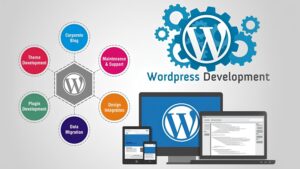In today’s fast-paced technological landscape, IT cost optimization is more critical than ever. As businesses grow more reliant on digital infrastructure, IT leaders must balance innovation with budget constraints. Reducing IT expenses while maintaining performance is crucial to staying competitive. This article will explore proven strategies for IT cost optimization, helping businesses maximize efficiency without sacrificing quality or security.
What Is IT Cost Optimization?
IT cost optimization involves reducing IT expenditures while ensuring the infrastructure, services, and tools used by an organization remain efficient and secure. It’s a strategic approach to balancing cost with performance, prioritizing investments that provide the best value to the business.
Key Strategies for IT Cost Optimization
- Leverage Cloud Services for Flexibility and Savings
- Shift to the Cloud: Migrating to cloud-based solutions can significantly lower infrastructure costs by eliminating expensive on-premise hardware. It also allows businesses to scale resources as needed, preventing overspending.
- Monitor Cloud Usage: Use cloud cost management tools to track consumption and optimize costs. Adopt reserved instances or pay-as-you-go models to avoid unnecessary expenses.
- Optimize Software Licensing and Subscriptions
- Consolidate Licenses: Review your software licenses to identify unused or underutilized tools. Consolidate subscriptions and eliminate duplicates to save on costs.
- Negotiate with Vendors: Renegotiate contracts for bulk discounts or favorable terms. Vendor relationships are crucial, and securing better deals can lower recurring expenses.
- Implement Virtualization and Automation
- Virtualize Servers: Reduce hardware costs by implementing server virtualization. This allows you to run multiple virtual machines on fewer physical servers, lowering maintenance and energy costs.
- Automate Routine Tasks: Use automation tools to reduce manual IT tasks, freeing up resources and reducing human error. Automation can also enhance efficiency and lower operational costs.
- Outsource Non-Critical IT Services
- Consider IT Outsourcing: Outsourcing non-core IT services like helpdesk support, infrastructure management, or cybersecurity monitoring can be a cost-effective way to maintain high service quality without inflating costs.
- Managed IT Services: Partnering with managed service providers (MSPs) can reduce overhead by providing expert services at predictable costs.
- Optimize Data Storage
- Reduce Data Duplication: Data redundancy increases storage costs. By identifying and eliminating duplicate data, you can minimize storage needs.
- Implement Data Tiering: Move infrequently accessed data to lower-cost storage options like cloud archives, while keeping critical data on high-performance storage solutions.
- Conduct Regular IT Audits
- Review Expenses Frequently: Regularly auditing your IT expenditures helps identify inefficiencies, redundancies, and opportunities for cost savings. These audits should include software, hardware, and operational expenses.
- Reassess IT Projects: Evaluate ongoing IT projects to ensure they deliver value. Consider postponing or downsizing projects that don’t align with current business goals.
- Adopt Open-Source Solutions
- Utilize Open-Source Tools: Open-source software can replace costly licensed solutions in many areas, from web development to cybersecurity tools. They offer robust functionality at a fraction of the cost.
- Enhance IT Governance
- Improve Governance: Effective IT governance ensures that resources are used efficiently. Establish clear policies for IT spending and involve business leaders in decision-making processes to align IT investments with overall business strategies.
Case Study: Achieving Cost Optimization in Practice
A mid-sized tech company reduced its IT expenses by 30% within a year by consolidating its cloud services, automating manual processes, and outsourcing its network management. The result was improved efficiency, lower operational costs, and better focus on core business growth.
Conclusion: Streamlining IT Costs for Long-Term Success
IT cost optimization is not about cutting corners—it’s about making smart financial decisions that maximize business value. By adopting strategies like cloud optimization, software consolidation, and outsourcing, businesses can reduce expenses while maintaining robust IT operations. Regular audits, combined with a focus on innovation, ensure long-term cost savings and organizational growth. Prioritizing IT cost optimization helps businesses remain competitive in an increasingly digital landscape.




